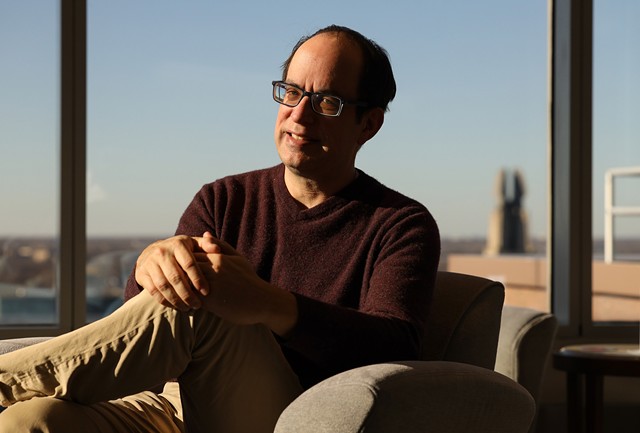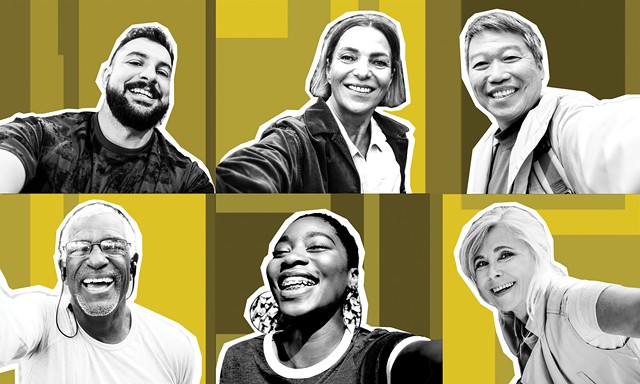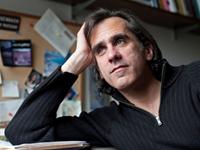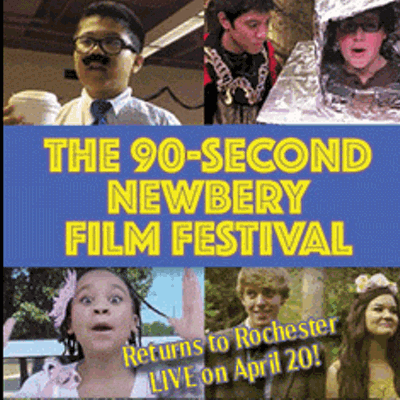[
{
"name": "500x250 Ad",
"insertPoint": "5",
"component": "15667920",
"parentWrapperClass": "",
"requiredCountToDisplay": "1"
}
]
Daniel Kinel looked out the expansive windows that encapsulate the 13th-floor conference room at Harter Secrest & Emery in downtown Rochester, where he practices corporate and securities law.
“On a clear day you can really see the Bristol Mountains,” he said, gesturing, “and over there, you can see Lake Ontario.”
The view has taken on a deeper meaning for Kinel, 51, since he was diagnosed with Parkinson’s disease eight years ago, when, as he put it, “I thought my life was over.”
In many ways, though, a new phase of his life was just beginning.
Today, Kinel works to demystify the disease, from taking on speaking engagements to participating in research studies, including a new study at the University of Rochester getting a lot of attention that uses selfies to predict whether a person is likely to develop Parkinson’s.
“I think the important thing about any diagnosis is what you can do with it in a positive way,” Kinel said.
Researchers at the University of Rochester have developed a test that uses computer software to track facial muscle movements that are invisible to the naked eye during a video selfie. Those movements, they claim, can determine with remarkable accuracy markers of Parkinson’s disease.
The study is a collaboration between the University of Rochester Medical Center’s leading expert in Parkinson’s disease, Dr. Ray Dorsey, and a University of Rochester associate professor of computer science, Ehsan Hoque.
The technology is derived from a field called computer vision, which helps computer systems analyze photographs and videos. Hoque’s team developed algorithms that allow computer vision-based software to analyze the facial movements associated with smiling, expressions of disgust, raising and lowering eyebrows, and reading aloud a complex sentence, among others.
Participants with the disease, or who may be likely to develop the disease, show less control over their facial muscles, or what clinicians call “modularity.” Within minutes, the program reveals whether the participant is showing symptoms of Parkinson’s or related disorders.
“He’s taking the same things that we would normally do in a clinic, but instead of relying on a neurologist to do the assessments, he’s allowing the computer to do the assessment,” Dorsey said about the framework designed by Hoque’s team.
The technology, which was recently featured in Nature Digital Medicine and picked up in publications from there, could be transformative for people who are immobile or living in areas where they do not have easy access to a neurologist.
“It really has the potential of changing the way that health care is provided, the way that we think about managing chronic conditions like Parkinson's, the way that we diagnose diseases, and the way that the world interacts with them,” said Kinel, who worked with the team as a tester for an earlier model of the software and the finished product.
The test is available online at www.parktest.net, although researchers ask that only people with Parkinson’s disease should complete the study at this time.
Parkinson’s has become the fastest-growing neurological disease in the United States. The U.S. Parkinson’s Foundation predicts that nearly 1.2 million Americans will be diagnosed by 2030.
“Hundreds of thousands of people with the disease don’t even know they have it, and are suffering in silence,” Dorsey said.
Kinel noticed his first tremor in 2013, when he was 43. It was an unusual twitch in his right hand. As the days progressed, so did his symptoms. Within a couple of weeks, his back went out, and during a subsequent physical therapy session, he noticed that the right side of his body wasn’t responding like the left.
Looking back, Kinel said, the signs of Parkinson’s were there years before his diagnosis, but he had no idea how to recognize them.
That is where research, like the selfie test, comes in. “What if, with people’s permission, we could analyze those selfies and give them a referral in case they are showing early signs?” Hoque said.
What if? The ethical considerations of technology like this are many. The challenges include not only validating the accuracy of the algorithms but translating the output into a language that is humane.
“A machine should never tell a real human being that they have Parkinson’s,” said Hoque, who has a personal stake in the technology in that his late mother had Parkinson’s.
Nevertheless, the technology was promising enough to recently secure a $500,000 grant from the Gordon and Betty Moore Foundation, a philanthropic organization that supports scientific discovery and patient care improvements, for the research to continue.
Still, the money came with a stipulation: The foundation requires Hoque and his research team to validate the feedback that will be given to patients, especially those who are performing the test from home.
“It’s not just about building the technology, but appropriating it for the people it serves,” Hoque said.
The technology took roughly five years to develop, but it will be some time before neurologists can put it to practical use. It has yet to be approved by the Food and Drug Administration, and both Dorsey and Hoque predicted that could take years.
At this point, the data collected from anyone who takes the test is used for research purposes only.
“This is not something ready for prime time in terms of clinical care,” Dorsey said.
With the help of people like Kinel, though, it has a shot of getting there. Until then, Kinel, a married father with two children, is trying to live in the moment and enjoy the view.
“I try to be more mindful about what's happening in the moment, and what's happening around me,” he said. “And to be more thankful for those things.”
Racquel Stephen is a reporter for WXXI News, a media partner of CITY.












